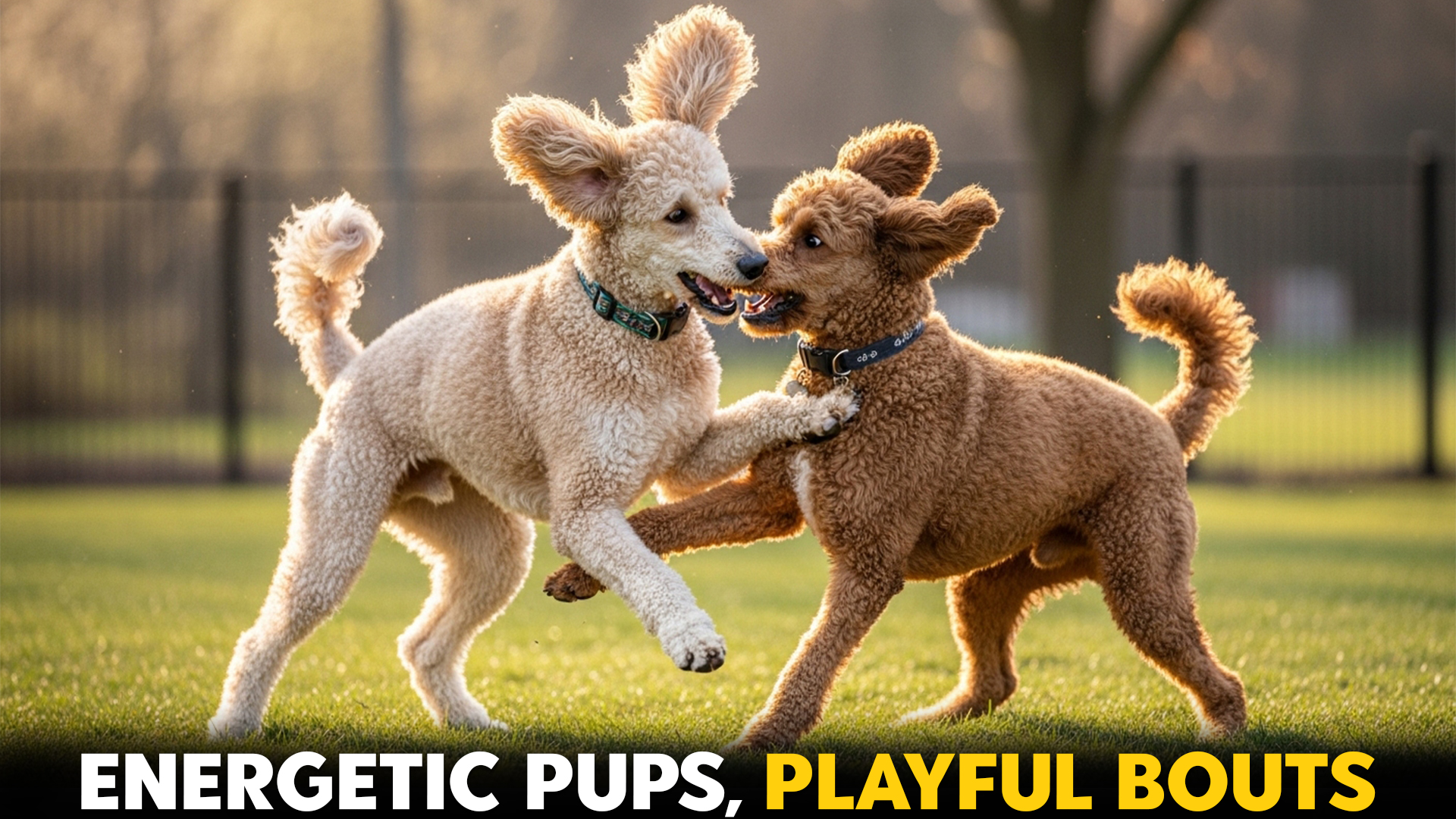If you already share your home with a four-legged friend—or plan to welcome another soon—you know that introducing dogs to each other can feel like a big moment. Will they instantly become best pals or need time to warm up?
The great news is that some breeds are natural social butterflies, always ready to tumble, chase, and play with their canine companions.
According to the American Veterinary Medical Association, over 45.5% of U.S. households have at least one dog, which means there are plenty of potential playmates out there. Choosing a breed that thrives on friendly wrestling matches can make all the difference in creating a happy, harmonious pack.
Get ready to discover the ultimate list of dogs that turn every play session into a pawsome wrestling event. Your future furry sparring partner might just be waiting in this lineup of playful champs!
Key Takeaways
Meet ten incredible breeds known for their playful personalities and natural love for making new furry friends.
Explore what makes each breed a great fit for multi-dog households, from their temperament to their fun-loving nature.
Pick up helpful tips on training, socializing, and keeping these energetic pups happy and well-behaved.
Learn how to create a harmonious home where dogs can thrive together and enjoy every playful moment.
Dog Breeds That Play With Other Dogs Like Wrestlers
1. Poodle
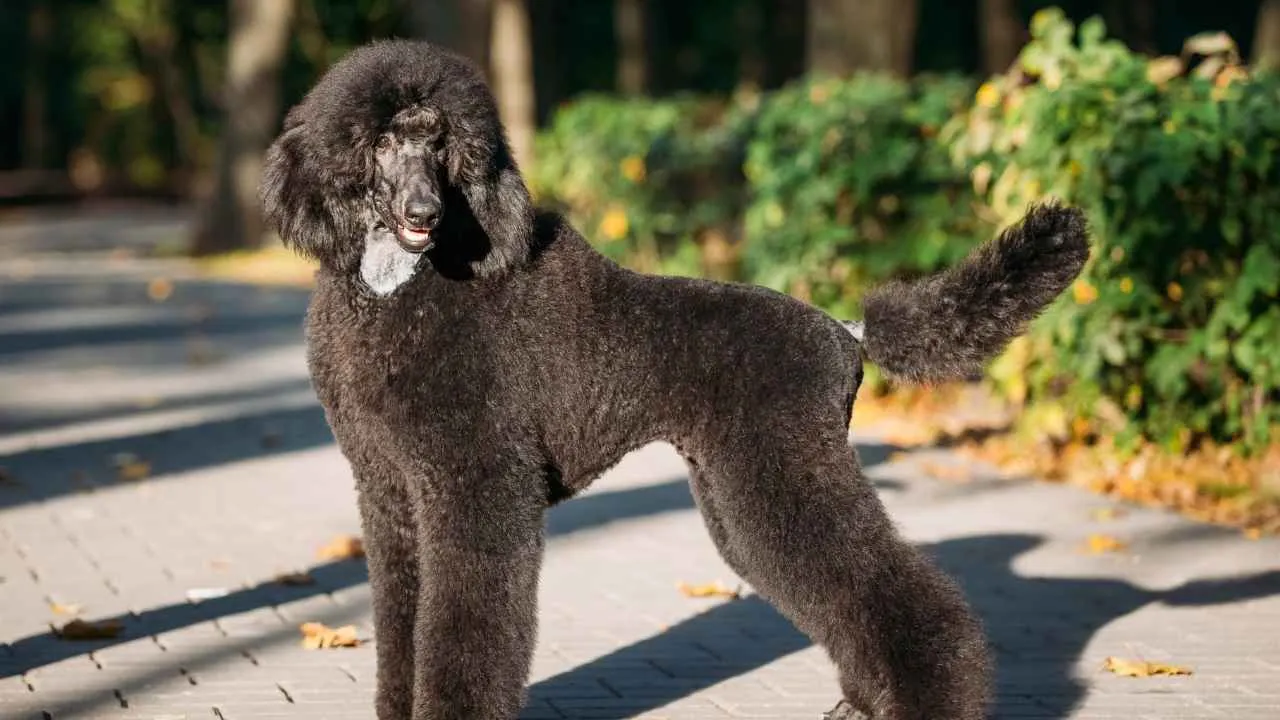
Elegant and neatly groomed, the Poodle is often misunderstood as aloof. In reality, this breed is warm, affectionate, and highly social.
Known for their incredible intelligence, Poodles are among the easiest dog breeds to train. Their natural charm and playful spirit make them a perfect fit for families with other dogs and children.
Personality & Play Style
Poodles thrive on companionship and love being part of the family pack. They may not greet everyone with the same instant excitement as a Labrador, but they form deep bonds and stay loyal.
They get along well with other dogs and enjoy games that challenge both their mind and body. Their playful nature makes them quick to join in on group activities and playdates with other dogs.
Tips for Owners
Training: Highly trainable and eager to learn, they excel at mastering new commands.
Companionship: They crave attention and flourish when surrounded by people and pets.
Activity: Daily exercise and mental stimulation keep them happy and well-behaved.
2. Basset Hound
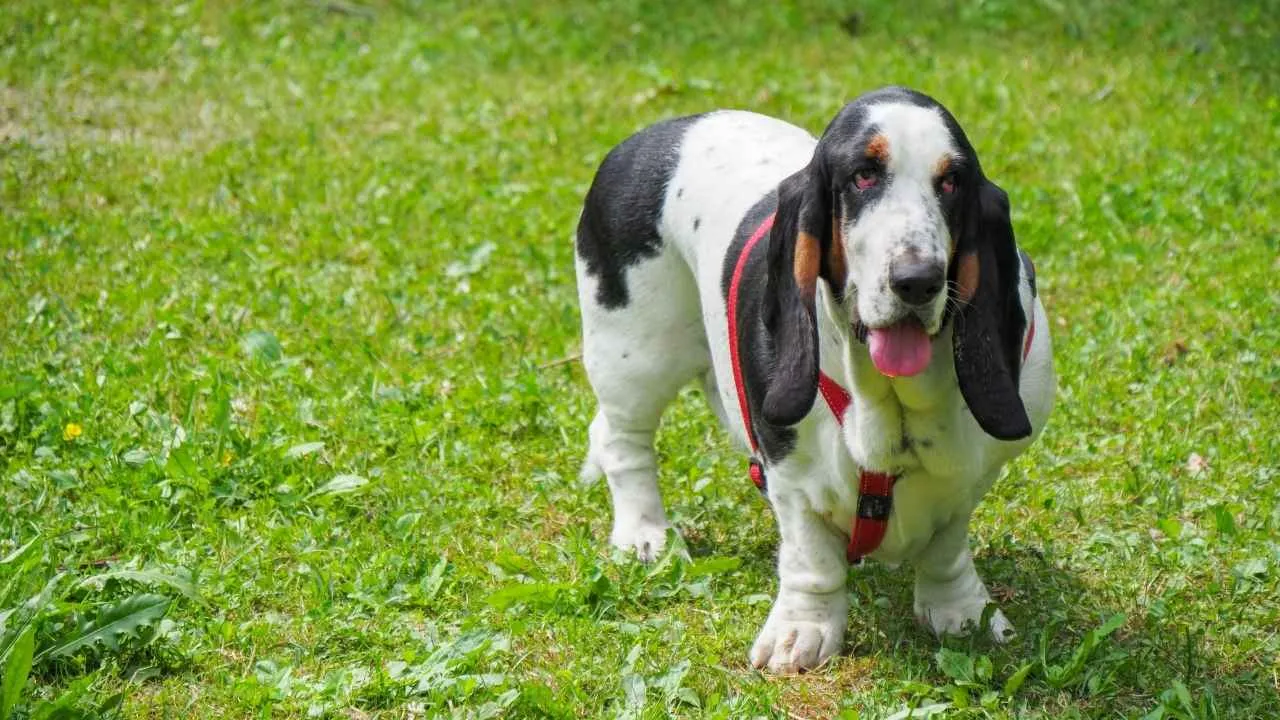
The Basset Hound is one of the most recognizable and lovable hounds. Originally bred in France and descended from the St. Hubert Hound, this breed was designed to hunt rabbits and hares.
With its long, velvety ears, droopy eyes, and wrinkled brow, it carries a look of gentle sadness that melts hearts everywhere. Purina says that their scenting skills are second only to the Bloodhound’s, making them incredible trackers.
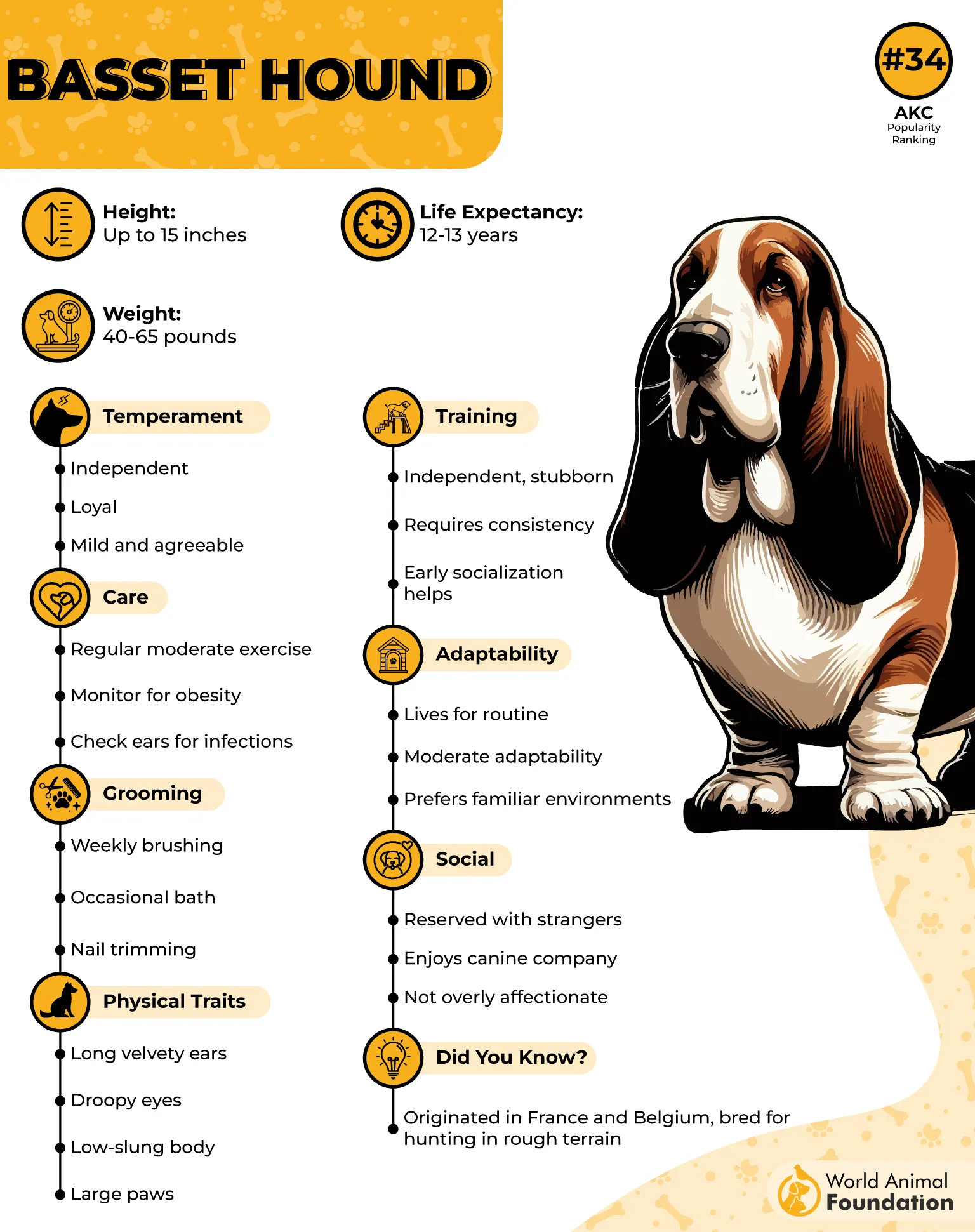
Personality & Play Style
Basset Hounds are calm, easygoing, and wonderfully down-to-earth. They get along with almost all dogs and quickly become part of the family pack.
Their laid-back nature makes them patient companions for children and even other small pets. While they may not match the energy of a high-spirited dog, their relaxed vibe can balance out a more active playmate.
Tips for Owners
Training: They can be stubborn, so be ready for patient, consistent training.
Companionship: Loyal and affectionate, they thrive when included in family life.
Exercise: Built for endurance rather than speed, they enjoy steady walks and casual outdoor adventures.
3. Pug

With their unmistakable wrinkled face and big expressive eyes, Pugs are pure charm. Known as the comedians of the canine world, they love to play and often show a mischievous streak.
Despite their muscular build, they are true couch potato cuddle companions and make wonderful play partners for kids and other pets. Their friendly personality and low prey drive help them bond easily with other dogs.
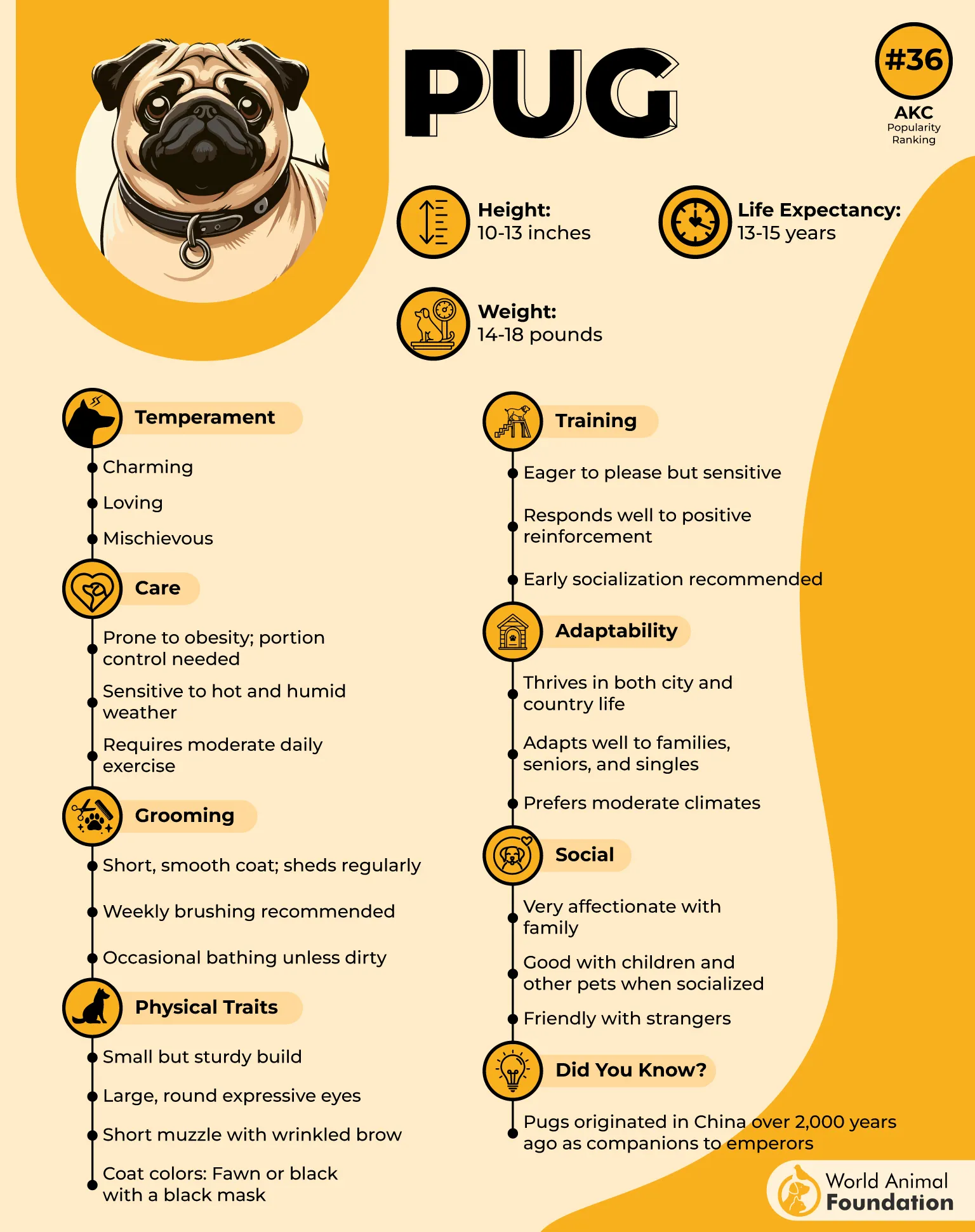
Personality & Play Style
Pugs thrive on fun and affection. They enjoy playful antics and can keep the whole family entertained. Their easygoing nature makes them great friends with pets of all sizes. They aren’t bred for hunting or herding, so they rarely show strong chasing instincts, which makes meeting new dog friends stress-free.
Tips for Owners
Health Care: As a brachycephalic dog breed, they are prone to breathing-related health issues, so watch their activity in hot weather.
Companionship: They love being with their people and are happiest when included in daily family life.
Training: Early training helps curb occasional stubbornness and keeps their playful energy well-directed.
4. Great Dane
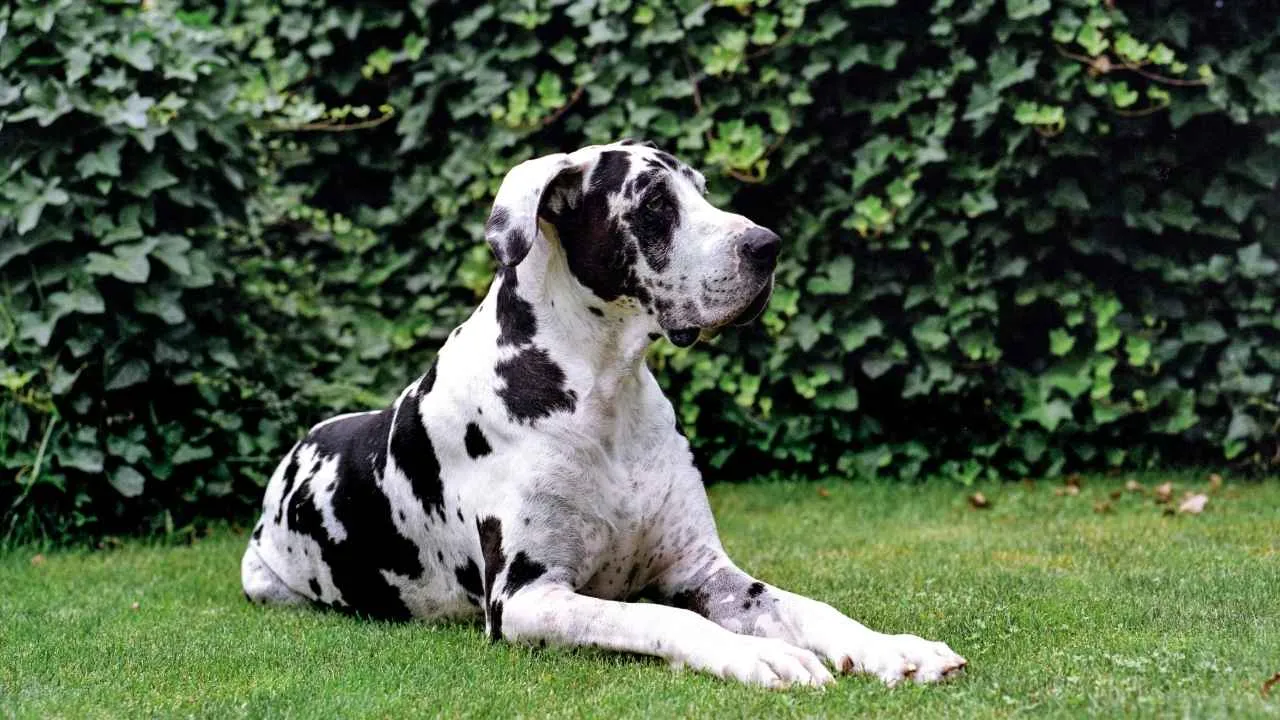
Originally bred in Germany to hunt wild boars, their intimidating size once served a purpose. Known as the “Apollo of Dogs,” according to the AKC, the Great Dane is the very picture of strength and nobility.
Today, the Great Dane is known more for its sweet nature than for hunting skills. These gentle giants love affection and are friendly with both people and other animals.
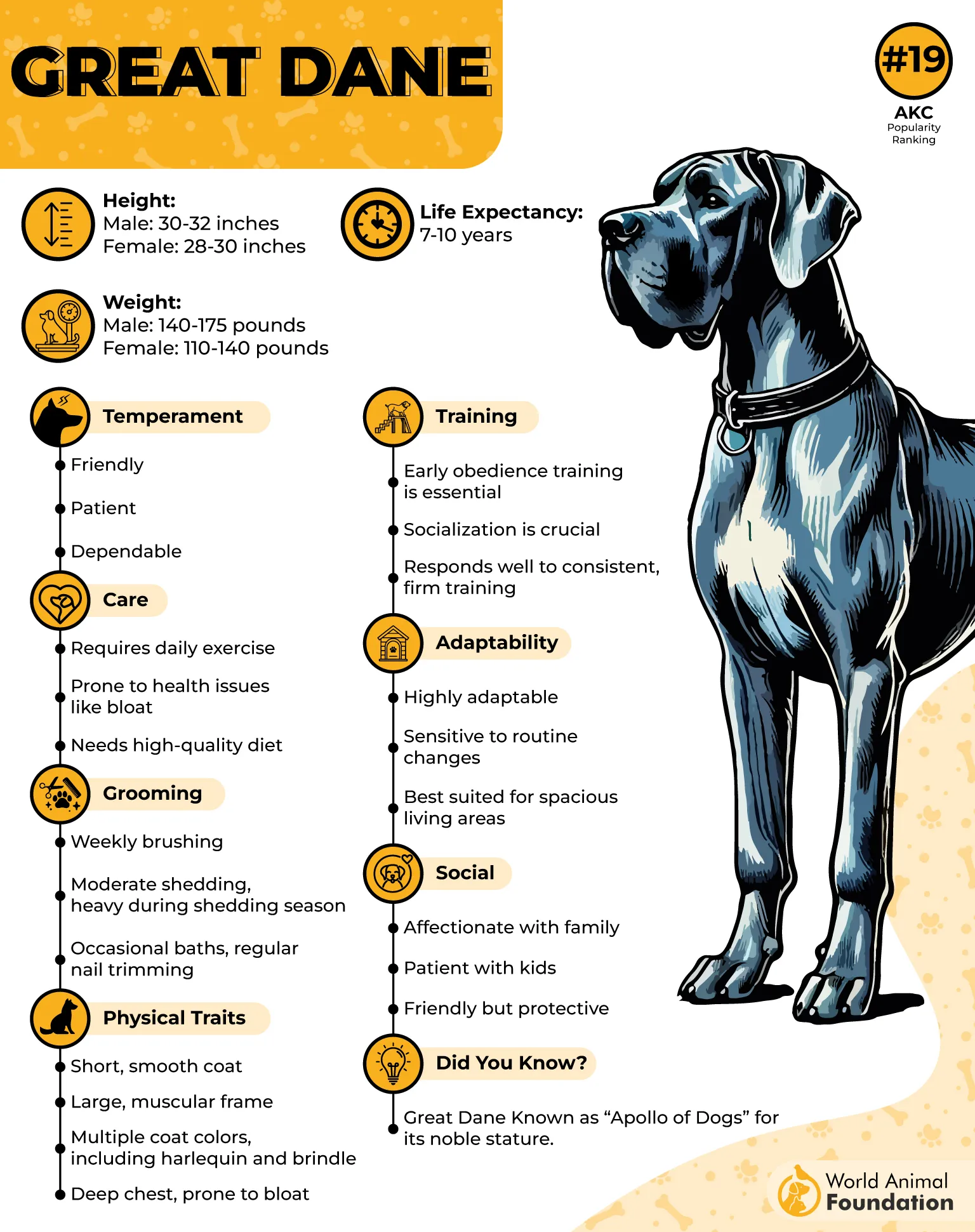
Personality & Play Style
Despite their impressive build, Great Danes are calm and affectionate. They are playful without being rough and get along well with children and other pets.
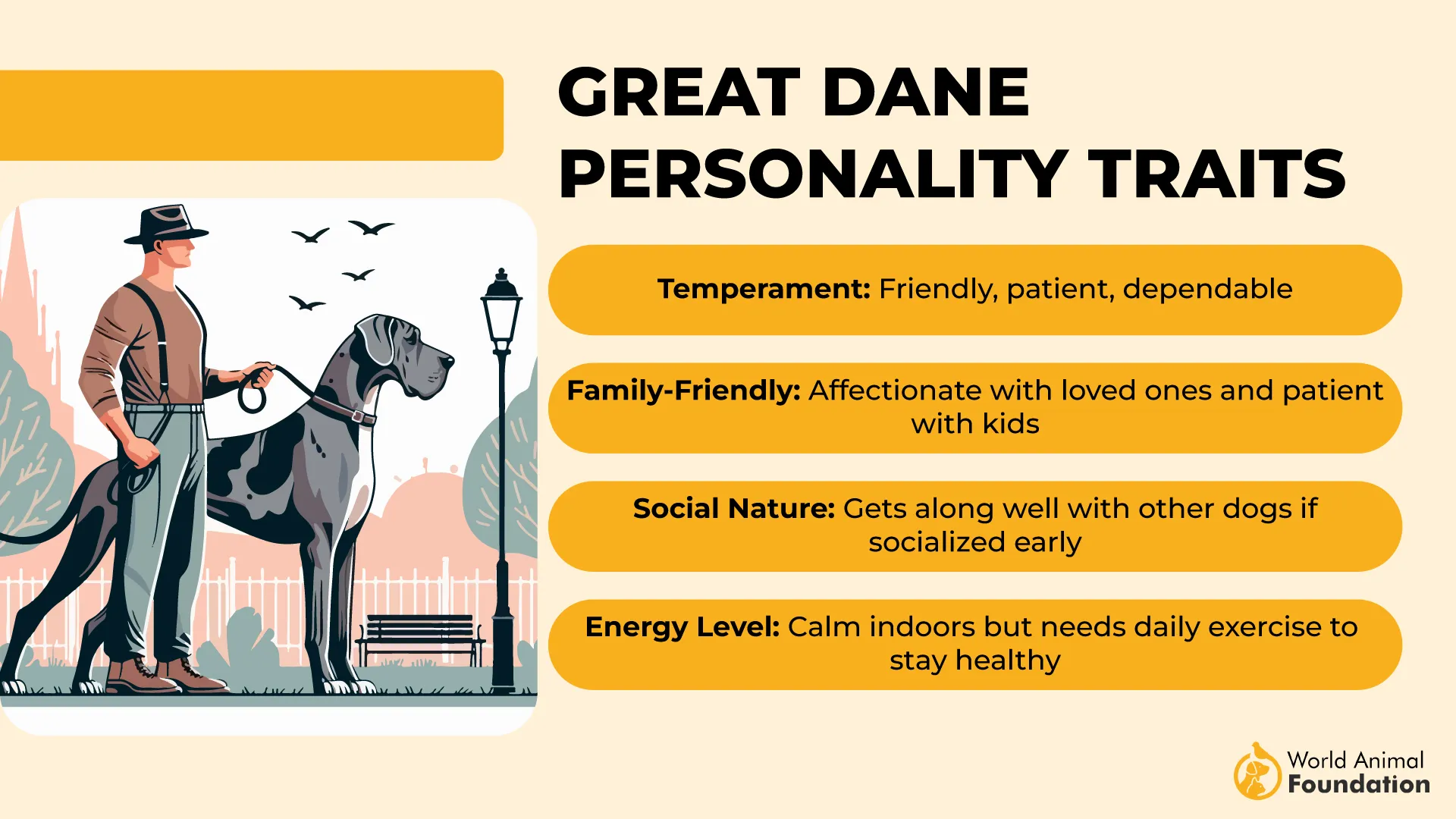
Their easygoing temperament makes them a joy in multi-dog homes. They enjoy spending time with their families and often seek out cuddles as much as play.
Tips for Owners
Space Needs: Provide enough room for them to stretch and relax comfortably.
Training: Their calm disposition makes them easy to train with patience and consistency.
Companionship: They thrive on love and attention, happily bonding with other dogs and family members.
5. Saint Bernard
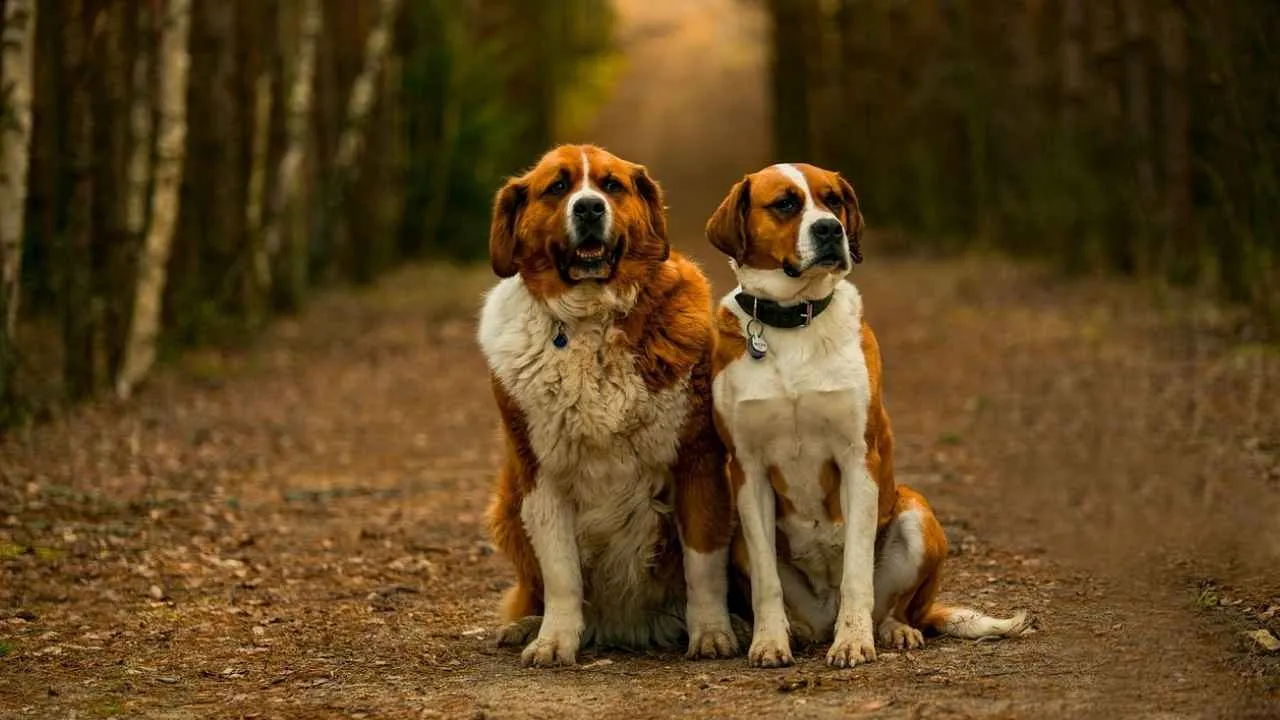
The Saint Bernard is a legendary breed with a history of saving lives in the snowy Alps of Switzerland and Italy.
First trained by monks in the 1600s, these dogs rescued lost travelers and pulled people from avalanches. Over 400 years later, their calm and gentle nature has made them beloved family companions across the world.
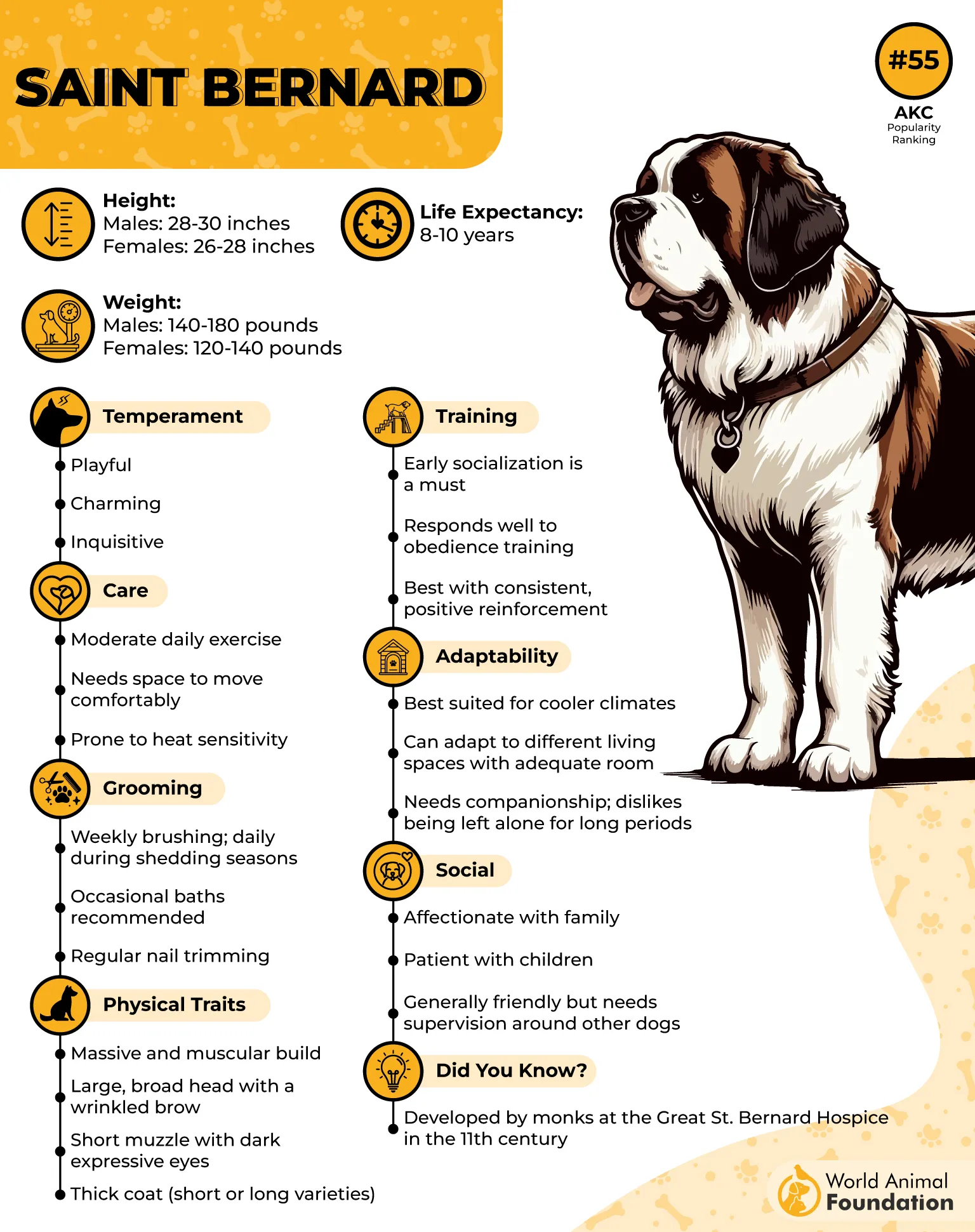
Personality & Play Style
Saint Bernards are patient, watchful, and incredibly affectionate. They bond easily with children and other pets, often showing a nurturing side that makes them natural protectors. Their calm demeanor helps them get along with all kinds of animals, creating a peaceful and friendly atmosphere at home.
Tips for Owners
Companionship: They thrive on family interaction and love spending time with people and pets.
Training: Their gentle temperament makes training easier with positive reinforcement.
Activities: Beyond being loyal companions, they excel in tasks like obedience trials and even weight-pulling competitions.
6. Golden Retriever
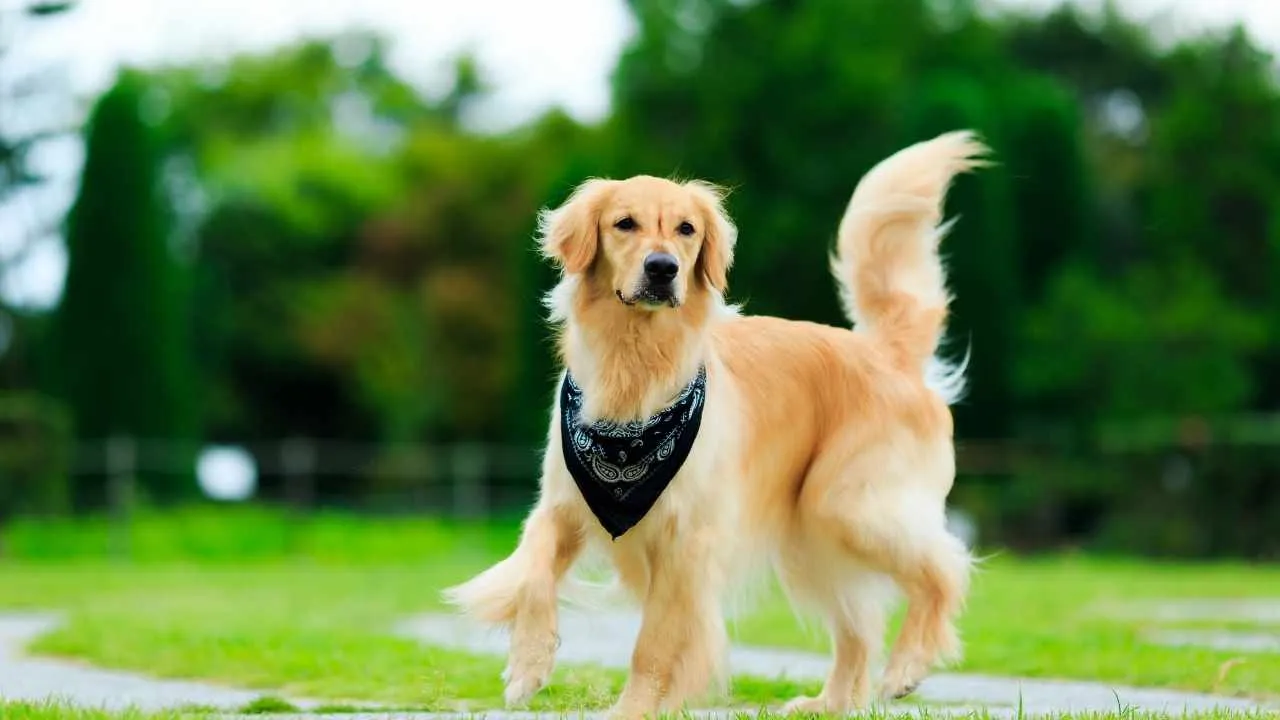
Golden Retrievers are among the most beloved family dogs in America. Gentle, patient, and full of affection, they fit easily into homes with children and other pets. Known for their calm nature and eager-to-please personality, they make introducing a new puppy or another dog simple and stress-free.
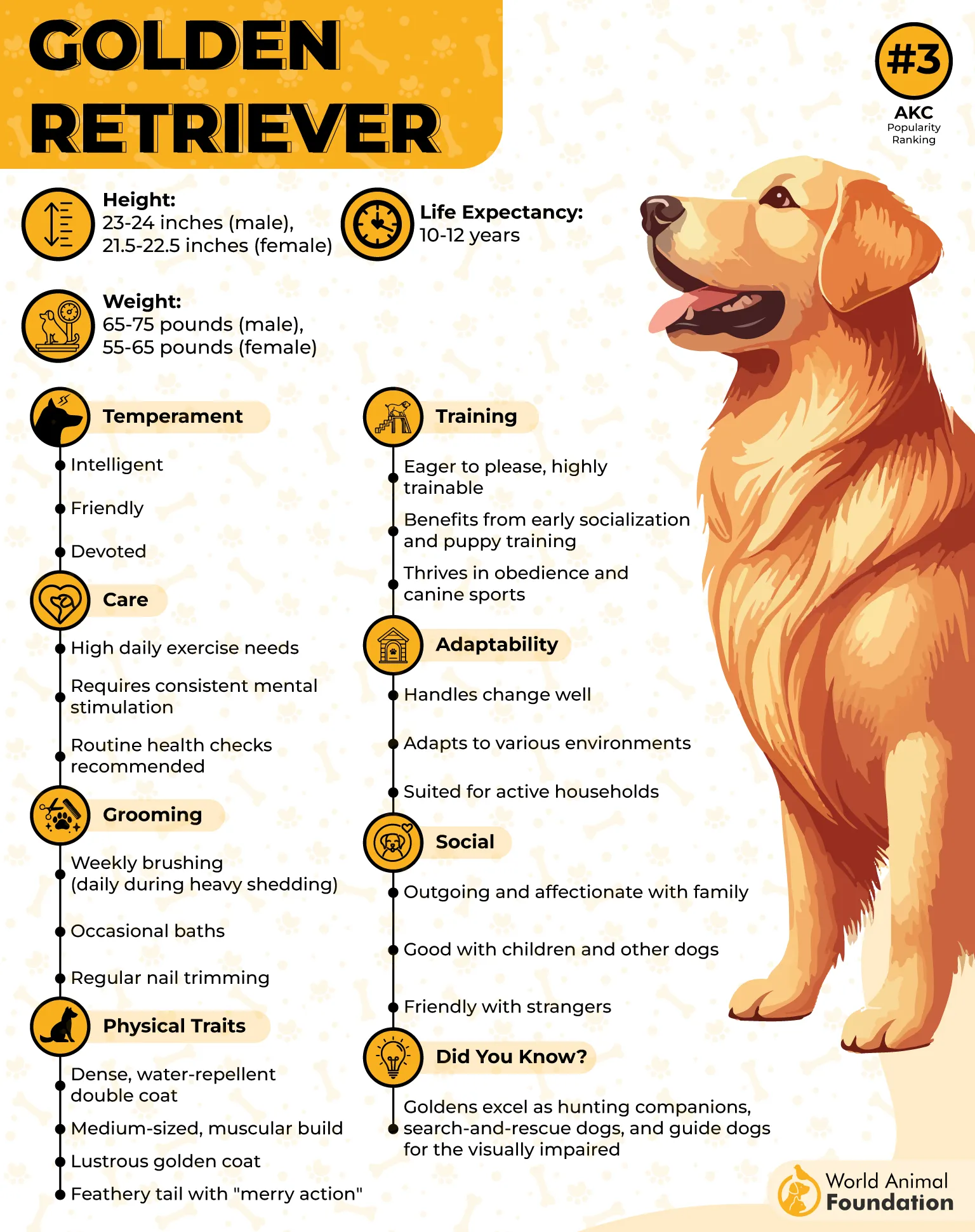
Personality & Play Style
These companion dogs are playful and kind, making friends with almost every dog they meet—even breeds known for being more reserved or bold. Their happy spirit and even temperament keep the peace in multi-dog homes. They love to join in games and can turn ordinary moments into joyful adventures.
Tips for Owners
Training: Intelligent and eager to learn, they are easy to train with positive reinforcement.
Companionship: They thrive on human interaction and can develop separation anxiety if left alone too long.
Social Nature: Their love for people and pets makes them perfect for families with multiple animals.
7. Labrador Retriever

Labrador Retrievers are among the most popular dog breeds in the United States, and it’s easy to see why. Full of energy and love, they are friendly, curious, and naturally tolerant of other animals.
Bred to work closely with people and other dogs, Labs are often chosen as service and therapy dogs because of their social nature and gentle temperament.
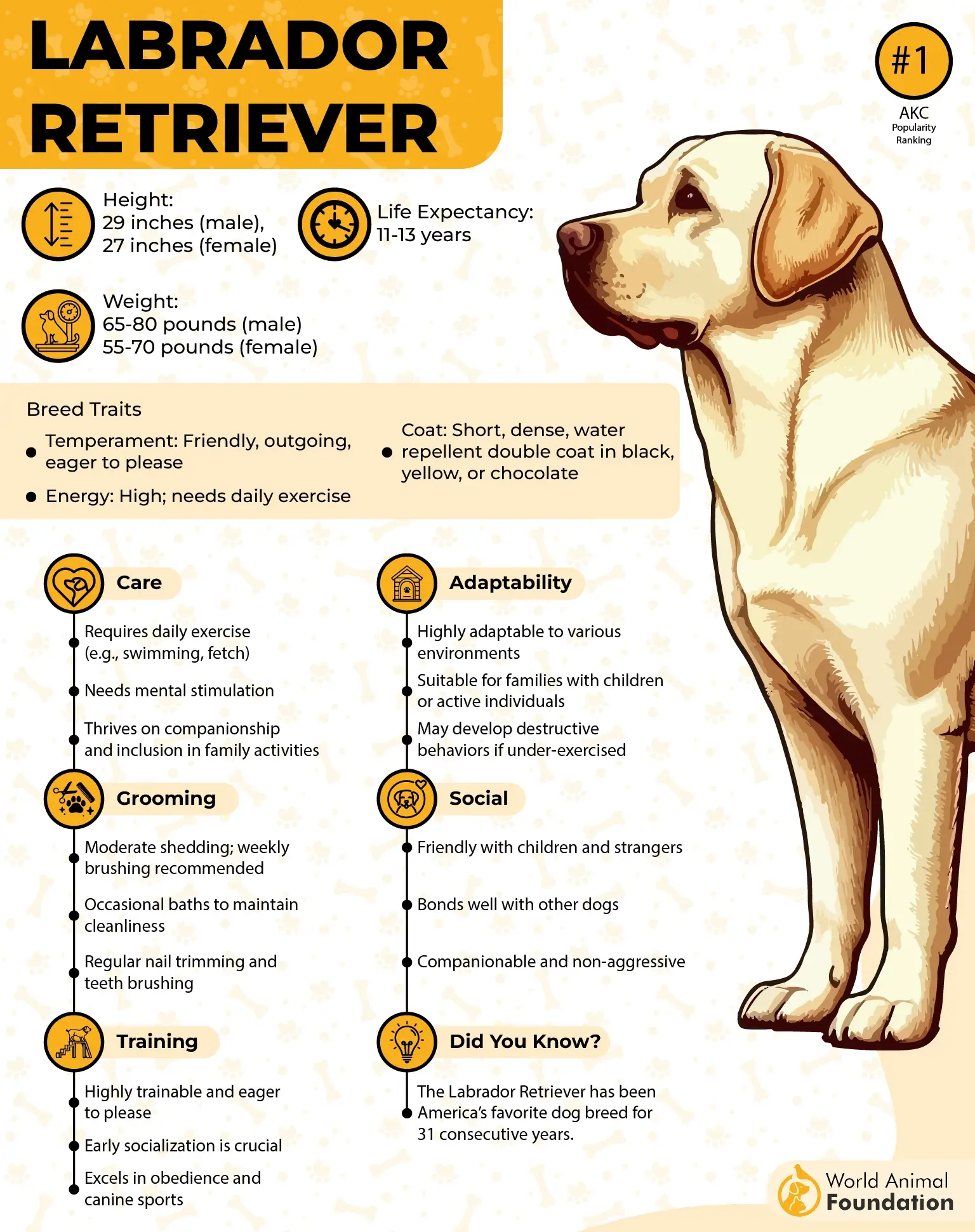
Personality & Play Style
Labs are playful and eager to greet everyone they meet—whether it’s a human or a fellow dog. Despite their size, they rarely show aggression and are more likely to welcome new friends with a wagging tail.
They thrive on outdoor activities and love games like fetch. Their enthusiasm can be overwhelming at times, so early training helps keep their excitement in check.
Tips for Owners
Training: Teach them to approach new people and dogs calmly, as they can be overly enthusiastic.
Companionship: They enjoy spending time with families and other pets and hate being left out of the fun.
Activity: Regular exercise and play keep them happy and healthy.
8. Pekingese
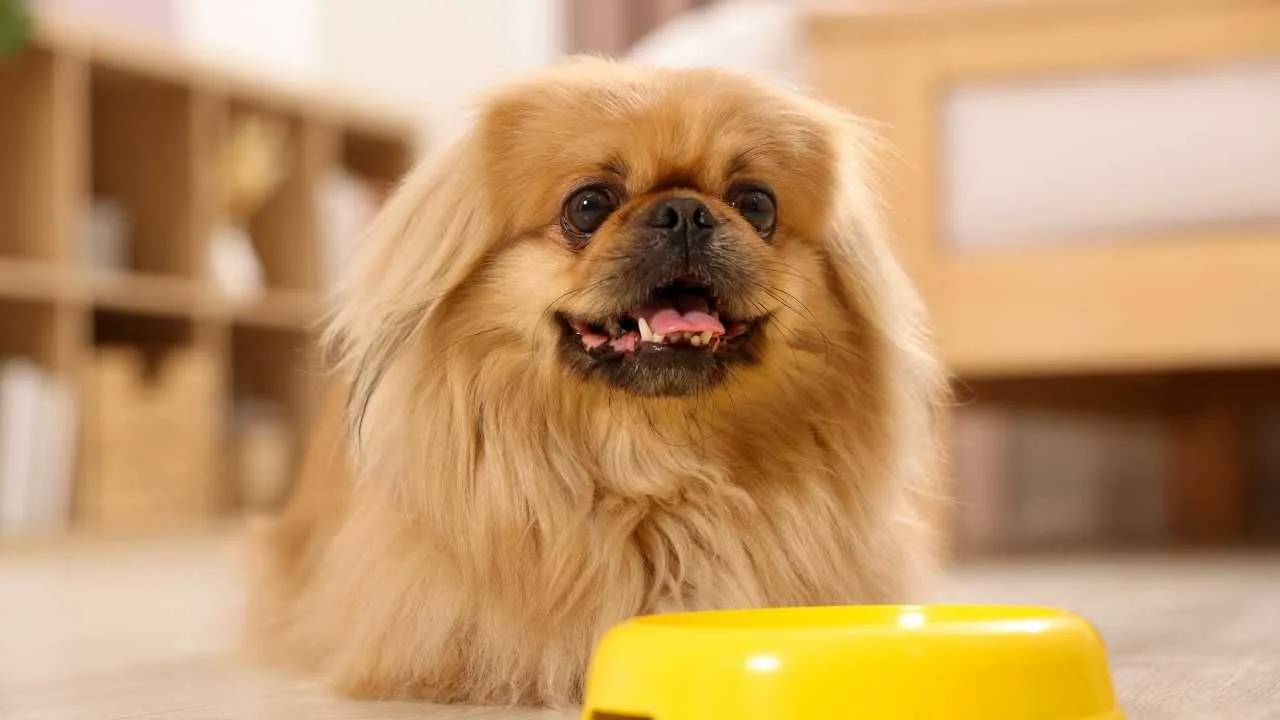
The Pekingese has a long and noble history, once treasured by the royal families of ancient China and even honored in Buddhist temples, as mentioned by Britannica.
Known for their flowing “lion’s mane” coat, large dark eyes, and unique rolling gait, these little dogs were bred to live in palaces. They carry themselves with a regal air and form a close bond with their chosen human.
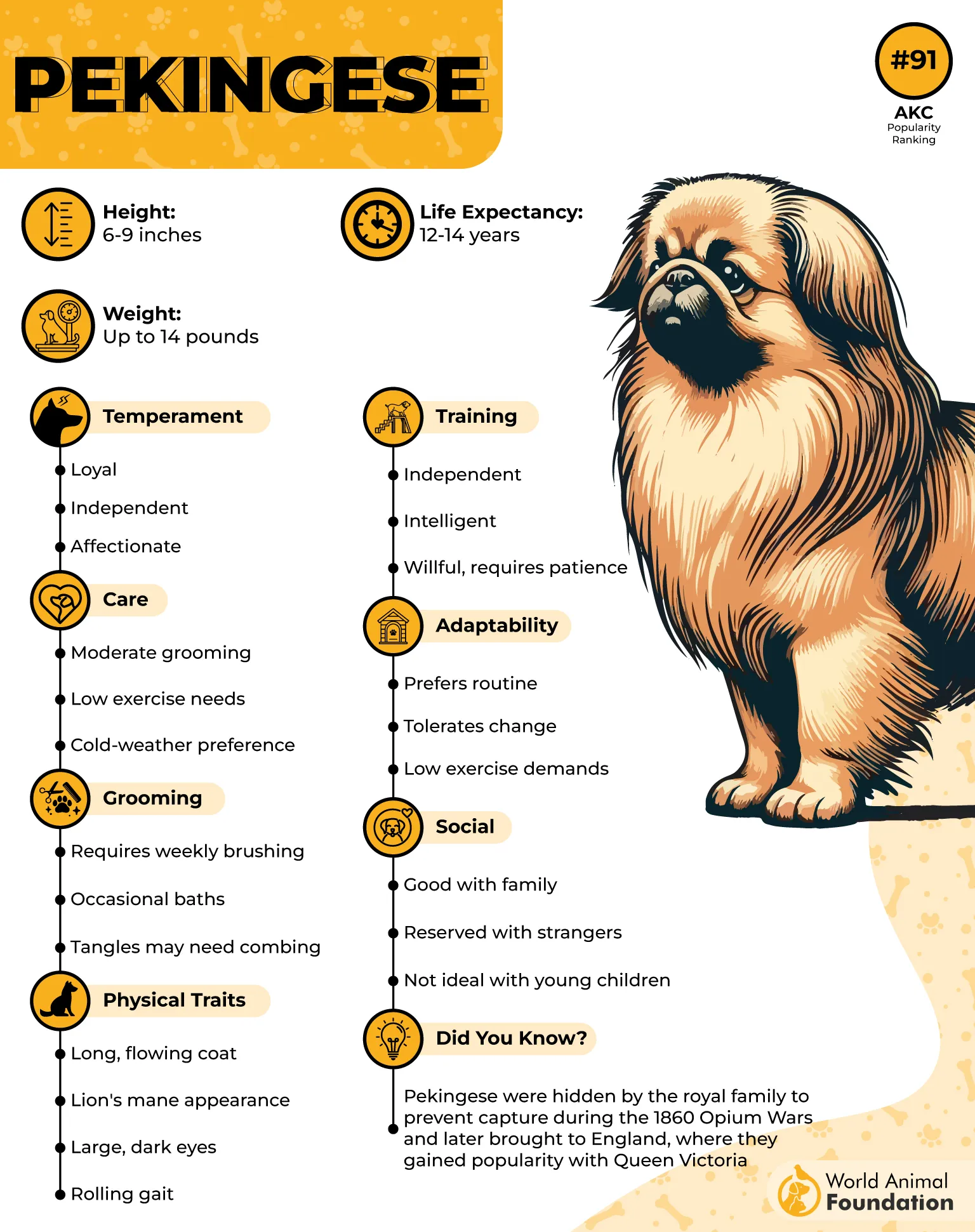
Personality & Play Style
Affectionate and sweet, Pekingese love spending time with their family and can get along with other dogs. They can also be a bit possessive of their favorite person, so introductions to new pets should be done with care. They are charming companions who enjoy calm, gentle play rather than roughhousing.
Tips for Owners
Socializing: Introduce them slowly to other pets to prevent jealousy.
Care: Their thick coat and flat face mean they need regular grooming and careful attention to health.
Companionship: They thrive on affection and enjoy quiet moments with their family.
9. Boxer

The Boxer is a bright and athletic breed that has long been a family favorite. First brought to the United States from Germany in the 1930s, they were originally used for hunting.
Today, Boxers are admired for their strength, courage, and fun-loving personality. Their alert expression and sleek coat give them a striking look, while their affectionate nature makes them wonderful companions.
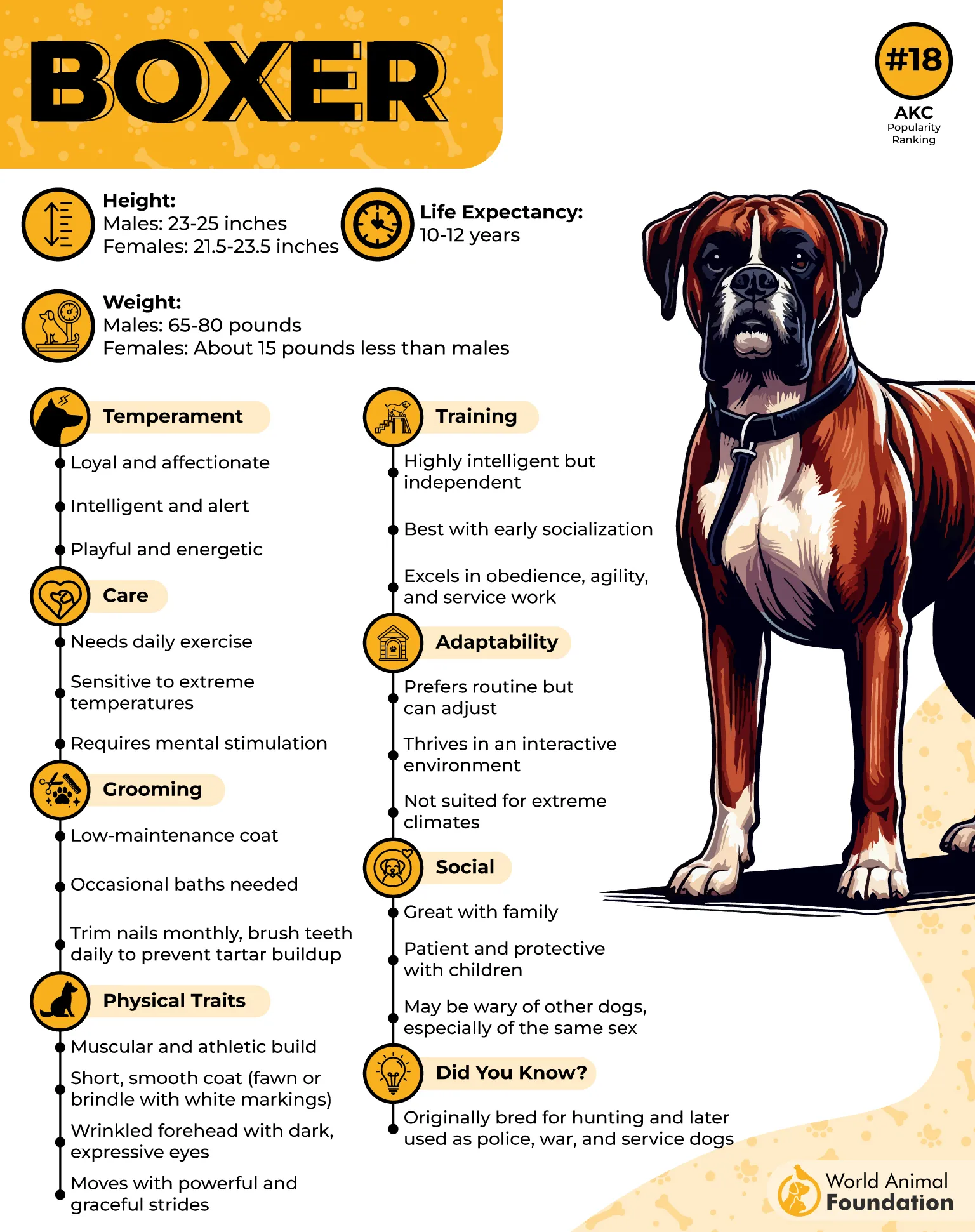
Personality & Play Style
Energetic and highly social, Boxers love the company of both people and other dogs. They are natural athletes and enjoy active games like running and jumping.
Their playful spirit and gentle side make them great friends for smaller pets, too. They form strong bonds with their family and are always ready to keep watch.
Tips for Owners
Socializing: Expose them to people and other animals early to build confidence and good manners.
Exercise: Regular play and exercise keep their bodies and minds happy.
Companionship: They thrive on affection and love, spending time with their human and animal friends.
10. Collie
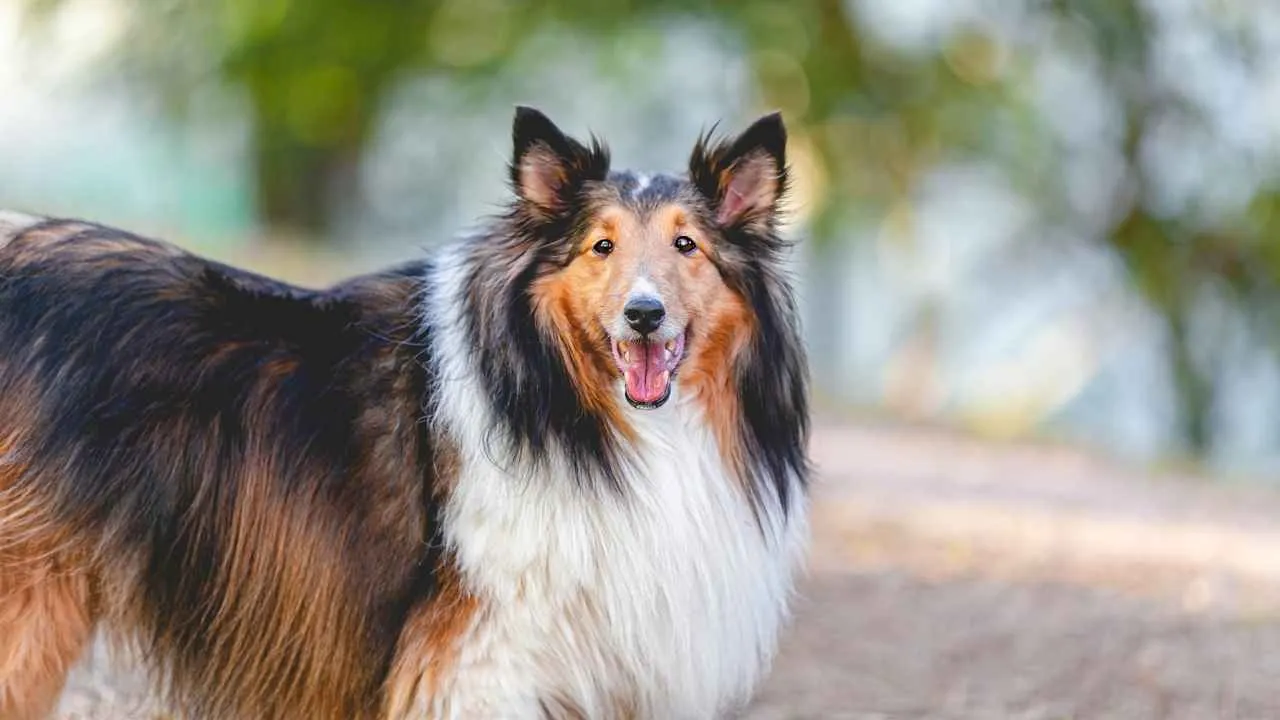
Collies are famous herding dogs with deep Scottish roots. Queen Victoria helped make the breed popular in the 1860s, and the story of Lassie turned them into a beloved family icon.
Originally bred to guide and protect livestock, Collies are intelligent, loyal, and eager to please, making them a perfect fit for families with multiple pets.
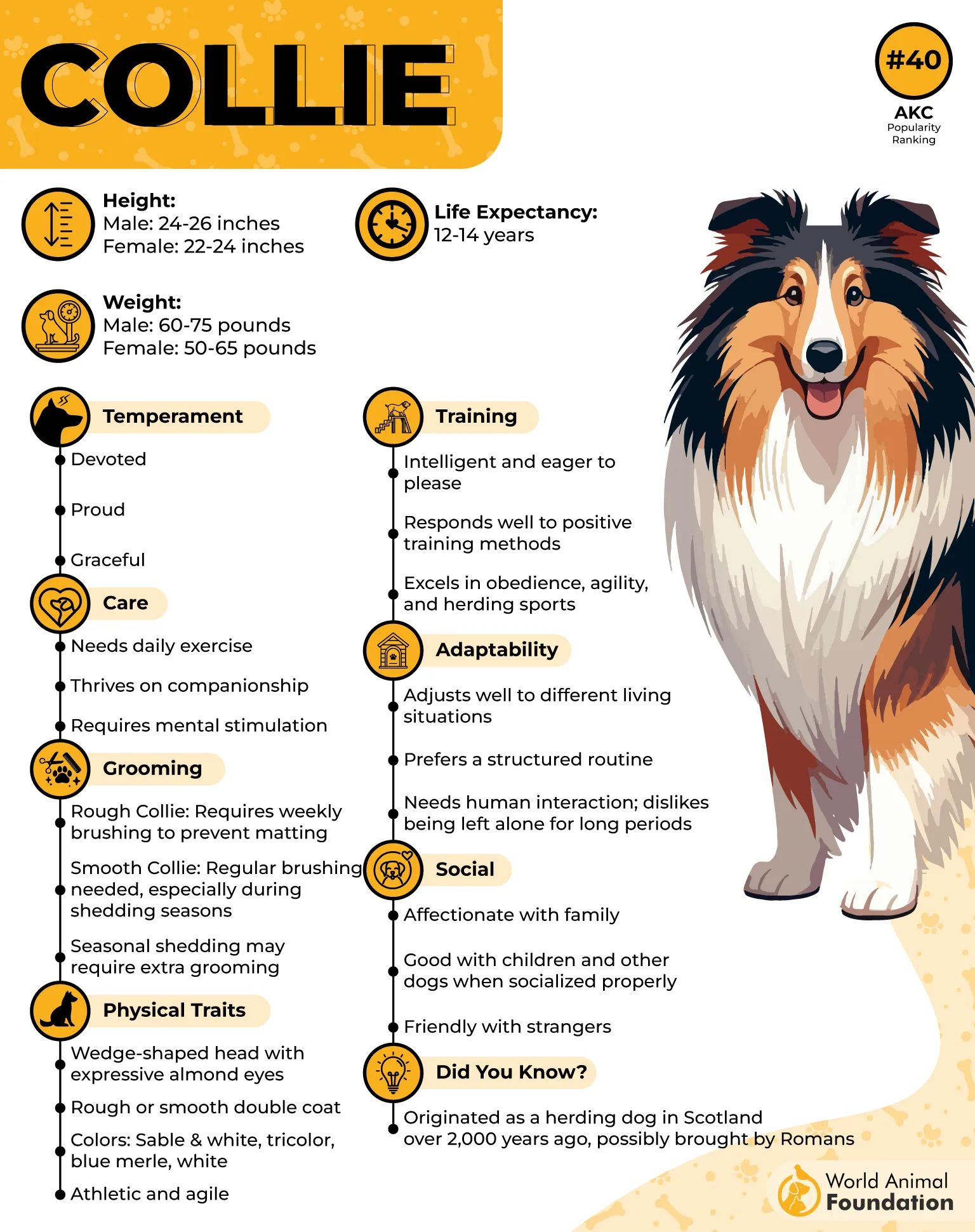
Personality & Play Style
Collies are gentle, curious, and quick to learn. Their natural herding instincts give them a strong sense of responsibility toward their family and other animals.
They form close bonds with pets and children, often showing a protective yet nurturing side. Sensitive but friendly, they enjoy fun training sessions and love being given a job to do.
Tips for Owners
Training: Make sessions playful and engaging to keep their interest.
Socializing: Early interaction with other animals helps them grow into confident companions.
Companionship: They thrive on affection and enjoy being an active part of family life.
Conclusion
Dog play can look wild and even a little rough, but it’s basically how many dogs bond and communicate. At the dog park, you might notice one or both dogs racing at full speed or even body slamming each other.
This isn’t meant to hurt or knock anyone down—most pups are big fans of full body contact and self handicapping, meaning they keep their strength in check so play stays fun.
Different play styles can include neck biting, flashing teeth, barking, or when dogs play tug together. If you’re wondering whether it might turn aggressive, pay attention to its signals. Dogs in control of their behavior will pause, take turns, and completely lead each other back into play.
What might look scary can actually happen as part of normal canine interaction when both dogs tend to share a common play style.
So next time you see a lively wrestling match, remember that dogs have their own way of having fun. By understanding their cues and letting them guide the action, you’ll see how joyful and natural their play can be—whether it’s at home or out at the dog park.


